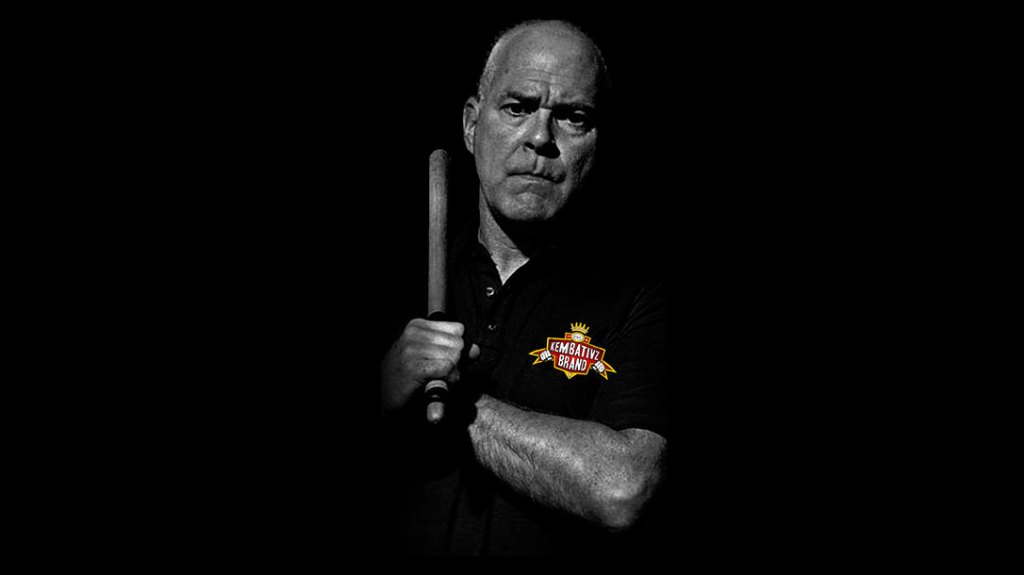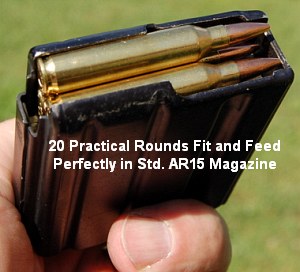Kelly McCann is the most knowledgeable person in the field of professional-level violence. McCann, a former member of tier-one units, was one the United States military’s top subject matter experts on unarmed combat. He is considered one of the most respected authorities on combat handgunning and is highly regarded with a firearm. We take a look at his views on non-lethal self defense options.
Non-lethal Self-Defense in a Increasingly Violent Environment
McCann continues to indulge in both of his passions. His Renegade Combat Sports Club produces pro mixed martial arts fighters. He continues to travel the globe training civilian, military, and law enforcement clients in shooting.
McCann is equally skilled in a third area, between firearms and empty hands. He refers to it as “bridge weapons”, which are alternatives that fall between being unarmed or using lethal weaponry.
The Less-than-Lethal Option
Although bridge weapons can be used to harm or distract an attacker, there is less chance of it being fatal. A knife or gun can be used in a home invasion. However, in public, if you use deadly weapons against an unarmed attacker, it could lead to serious legal problems.
“Many men arm themselves with knives or guns, and these are very effective weapons. McCann stated that you have now prepared yourself for approximately 2% of the violent situations that might arise.
He said, “Without bridge weapons, you’re going have to go empty hands to lethal force.” Bridge weapons are more effective than lethal weapons even though they may be less effective. They can also be more legally defendable than a deadly weapon.
McCann suggests that less lethal tools, or “fight benders,” may be just what you need to temporarily gain an advantage on the ground against someone with a superior ground strategy.
There are many non-lethal self defense products that you can carry for your personal safety. McCann prefers those that create distance to those that are close to the weapon. This is partly because a bridge weapon requires more skill than one that is closer to the target. However, longer-range weapons might not always be an option.
“Yes, if it’s possible to conceal it, I’d prefer a 21-inch ASP baton over a pocket stick. McCann said that an ASP isn’t legal in every jurisdiction.
Let’s now look at the pros and cons of the most common types of less-than lethal self-defense weapons.
Pain Compliance Tools
Although short sticks, such as a Kubotan can only be used up-close and require some skill, it is highly concealable. They are also legally defendable. You can attach your keys to one and have a long keychain. McCann says that this will draw less police attention than something like a knife.
They are not easy to use and will require practice. Even experienced grapplers can feel uncomfortable when they try to dig the end of a stick into weak points on their opponent’s bodies.
However, the goal is not to use them to subdue an attacker. The goal is to break the hold of the attacker so that you can escape. You can simply insert the end of the tool in the attacker’s forearm, and then pull back. Most people will release their grip by this.
McCann has used these seemingly innocuous sticks in real life on multiple occasions.
McCann stated, “Onetime, I was working in an foreign country when I was jumped back to my hotel.” I didn’t know the time or whereabouts of the attack, so I don’t know if it was a random crime attack or something else.
“But I had the pain compliance device with me and placed the end in his clavicle. I was suddenly able to escape from him and the guy stopped fighting me. That’s all it takes to end contact. He turned and ran, as did I,” he said.
Electric Devices
McCann stated that “besides Tasers, who are in another category, things like stun gun are pretty much useless other then the show of them,”
Some people may be unable to stand the intense crackle and burning ozone smell of a stun gun. McCann stated that anyone with a combative mentality would be irritated by a stun gun.
“We used to take one the 5-million-volt ones to the pub. McCann recalled that the guys would get sore and start to shock themselves for fun.
Impact Tools
McCann believes in the importance of impact tools such as collapsible batons. These weapons require some skill, but they are much easier than a short stick. It is possible to simply stand back from your opponent and swing away.
Although the spring mechanisms in cheap collapsible batons can sometimes fail, they are generally strong enough to withstand impacts. McCann recommends Bonowi as the best baton on the market. However, you should avoid hitting the head unless your situation is truly life-threatening. Head shots can cause severe injury.
This is an example of a perfectly acceptable improvised weapon that is less lethal. This sturdy wallet is made of leather. It is a sturdy leather ID wallet that can be filled with coins and swung around your neck by the lanyard. It weighs in at approximately 12-16 ounces.
Even if you don’t want to target the head, batons are still very useful. McCann discovered this once while on a protection detail in a foreign country.
He remembered that he had come across another official with a separate group of local soldiers. There was a disagreement and one of the soldiers pulled his gun. I held an ASP in my hands, and I think I nearly shattered his forearm. He didn’t draw …” the gun.
Noise Generators
These noise generators can be used to draw attention to you and your attacker, but they won’t deter anyone. McCann stated that companies have tried to make noise generators strong enough to incapacitate attackers, but they don’t work.
Flashlights
Perhaps the most simple tool to use is a flashlight. To temporarily blind an attacker, point the flashlight at him and shine it in his face. McCann loves brighter lights, and McCann especially likes those that can produce stroboscopic effects.
He recommends tactical flashlights at least 8 inches in length. This is large enough to protrude from your pocket and makes them easier to draw. It can also be used to impact tools. He cautioned against using the ones with sharp, cutting edges. They can cause small punctures and cuts, which could prove to be legal issues.
You can also use flashlights to pair with firearms in uncertain situations.
“You can hit them with a light and then draw your gun. They may not even be aware that you have drawn. You can verbally warn them while your weapon is on them. You can then put the gun away. He said that this is how it has worked out for him many times. People didn’t even know I had my gun.”
Aerosol Chemical Iritants
McCann recommends this tool as a less-lethal option. They are usually concealable and don’t require as much skill as a pocket knife. He said that pepper sprays are highly effective and he doesn’t like tear gas sprays. Although only 6% of people are affected by them, 94% of those who use them properly will experience adverse reactions.
McCann says that pepper mixtures should be at least 2,000,000 Scovilles. He prefers spraying in a fogger to a stream. They can be used to defuse an area. To create a barrier, spray the fog in a figure-8 pattern in front of yourself. Make sure you don’t step forward to grab a faceful of it.
These have been used on deployments when we thought we were being tracked by someone. We would just spray it behind us and they would shout, “Screw that!” McCann said, “Screw this!”
Pepper spray, like most other tools, should be accompanied by an unarmed combat skill. It is possible for someone who has been affected by it to still be able walk forward and grab you. Knowing some basic footwork will allow you to sidestep.
McCann is quick in pointing out that not all of these non-lethal self defense tools are fight-enders. McCann calls them “fight benders”, defense devices that can create more favorable situations for you.
Final Points
Non-lethal weapons that are less than lethal can be used to self-defense. This may give you some extra peace of mind. McCann said that their main strength is not necessarily what they can do during a fight. They should remind you that you are in a potentially dangerous place.
“Whenever you think about any weapon, or touch it in any way, that’s a trigger to get out of the situation you are in. You are wrong if you continue to hold onto a pocket knife in your hand while you reach for it. You should be running for the door as soon as you reach for it.
Visit Kembativz.com to learn more about Kelly McCann.
Continue Reading
Are you still having trouble finding what you were looking?
Search
The post Non-Lethal Self-Defense – Less Than Lethal (But Still Pretty Darn Effective), appeared first on Personal Defense World.

















